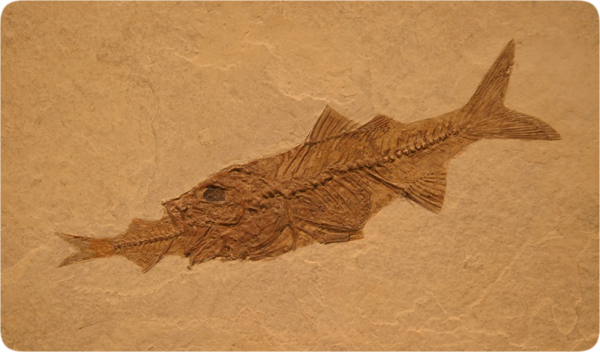Show your support by donating any amount. (Note: We are still technically a for-profit company, so your
contribution is not tax-deductible.)
PayPal Acct:  Feedback:
Feedback: 
Donate to VoyForums (PayPal):
| [ Login ] [ Contact Forum Admin ] [ Main index ] [ Post a new message ] [ Search | Check update time | Archives: 1, 2, 3, 4, 5, 6, 7, 8, 9, 10 ] |
Rapid Burial
Fossils all over the world show evidence of rapid burial. Many fossils, such as fossilized jellyfish (a), show by the details of their soft, fleshy portions (b) that they were buried rapidly, before they could decay. (Normally, dead animals and plants quickly decompose.) The presence of fossilized remains of many other animals, buried in mass graves and lying in twisted and contorted positions, suggests violent and rapid burials over large areas (c). These observations, together with the occurrence of compressed fossils and fossils that cut across two or more layers of sedimentary rock, are strong evidence that the sediments encasing these fossils were deposited rapidly—not over hundreds of millions of years. Furthermore, almost all sediments that formed today’s rocks were sorted by water. The worldwide fossil record is, therefore, evidence of rapid death and burial of animal and plant life by a worldwide, catastrophic flood. The fossil record is not evidence of slow change (d).

Figure 7: Fossil of Fish Swallowing Fish. The fossilization process must have been quite rapid to have preserved a fish in the act of swallowing another fish. Thousands of such fossils have been found.

Figure 8: Fish in Long Fish. In the belly of the above 14-foot-long fish is a smaller fish, presumably the big fish’s breakfast. Because digestion is rapid, fossilization must have been even more so.
src=http://www.creationscience.com/onlinebook/webpictures/lifesciences-fish_in_curved_fish.jpg alt=“” />
Figure 9: Fish in Curved Fish. The curved back shows that this fish died under stress.

Figure 10: Dragonfly Wing. This delicate, 1 1/2-foot-long wing must have been buried rapidly and evenly to preserve its details. Imagine the size of the entire dragonfly!
a. Thousands of jellyfish, many bigger than a dinner plate, are found in at least seven different horizons of coarse-grained, abrasive sandstone in Wisconsin. [See James W. Hagadorn et al., “Stranded on a Late Cambrian Shoreline: Medusae from Central Wisconsin,” Geology, Vol. 30, No. 2, February 2002, pp. 147–150.]
Coarse grains slowly covering a jellyfish would allow atmospheric oxygen to migrate in and produce rapid decay. Burial in clay or mud would better shield an organism from decay. If coarse-grain sand buried these jellyfish in a storm, turbulence and abrasion by the sand grains would tear and destroy the jellyfish. To understand how thousands of jellyfish were gently collected and preserved in coarse-grained sand, see pages [186-198 ]
Charles Darwin recognized the problem of finding fossilized soft-bodied organisms such as jellyfish. He wrote:
“No organism wholly soft can be preserved.” Charles Darwin, The Origin of Species, p. 330.
Once again, a prediction of evolution is seen to be wrong.
Preston Cloud and Martin F. Glaessner, “The Ediacarian Period and System: Metazoa Inherit the Earth,” Science, Vol. 217, 27 August 1982, pp. 783–792. [See also the cover of that issue.]
Martin F. Glaessner, “Pre-Cambrian Animals,” Scientific American, Vol. 204, March 1961, pp. 72–78.
b. Donald G. Mikulic et al., “A Silurian Soft-Bodied Biota,” Science, Vol. 228, 10 May 1985, pp. 715–717.
“... preconditions for the preservation of soft-bodied faunas: rapid burial of fossils in undisturbed sediment; deposition in an environment free from the usual agents of immediate destruction—primarily oxygen and other promoters of decay, and the full range of organisms, from bacteria to large scavengers, that quickly reduce most carcasses to oblivion in nearly all earthly environments; and minimal disruption by the later ravages of heat, pressure, fracturing, and erosion....But the very conditions that promote preservation also decree that few organisms, if any, make their natural homes in such places.” Stephen Jay Gould, Wonderful Life (New York: W. W. Norton & Co., 1989), pp. 61–62.
c. Presse Grayloise, “Very Like a Whale,” The Illustrated London News, 1856, p. 116.
Sunderland, pp. 111–114.
David Starr Jordan, “A Miocene Catastrophe,” Natural History, Vol. 20, January–February 1920, pp. 18–22.
Hugh Miller, The Old Red Sandstone, or New Walks in an Old Field (Boston: Gould and Lincoln, 1858), pp. 221–225.
d. Harold G. Coffin, Origin By Design (Washington, D.C.: Review and Herald Publishing Assn., 1983), pp. 30–40.
[From “In the Beginning” by Walt Brown ]
[
Next Thread |
Previous Thread |
Next Message |
Previous Message
]